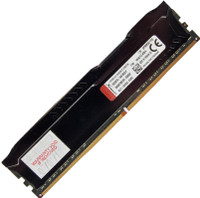Gaming Memory RAM
Gaming PC Memory RAM Upgrades
Here at Doctor Memory we know that the performance of gaming depends on first-class hardware. We sell the best gaming PC memory from all of the major brands, including Corsair, Kingston and Geil. Whether you’re in the market for the best RAM for gaming, cheap memory options or top tier memory brands, our guide has got you covered.
Discover Our Premium Brands:
Corsair: Trusted by professional gamers for its high-performance and reliable system.
Kingston: The most trusted name in gaming memory, Kingston DDR4 is the perfect combination of value and performance.
G.Skill Ares: Perfect for the gamer in you that wants it all without having to max out a credit card to get there.
Why Choose Doctor Memory?
Best Quality: We only offer the best quality gaming RAM for your maximum performance.
Cost Effective: All of our range have the best prices for gamers and workers alike.
Expert Tips: Not sure what to pick? Let our experts help you choose the best RAM for your gaming PC.
Whether you’re building a new gaming rig or just upgrading, Doctor Memory is your go-to source for peak performance. Dive in on our market and best gaming ram, swim through ultra-cool prices and at the end of the day feel your memory with 4GB or 8Gb ram that fit into this class of high performance rugged modules.
Gaming PC RAM FAQs
DDR3: Older standard, now outdated.
DDR4: The most popular type of memory for gaming computers these days.
DDR5: Next-gen overclockable RAM, great for multitasking during gaming on next-gen setups.






